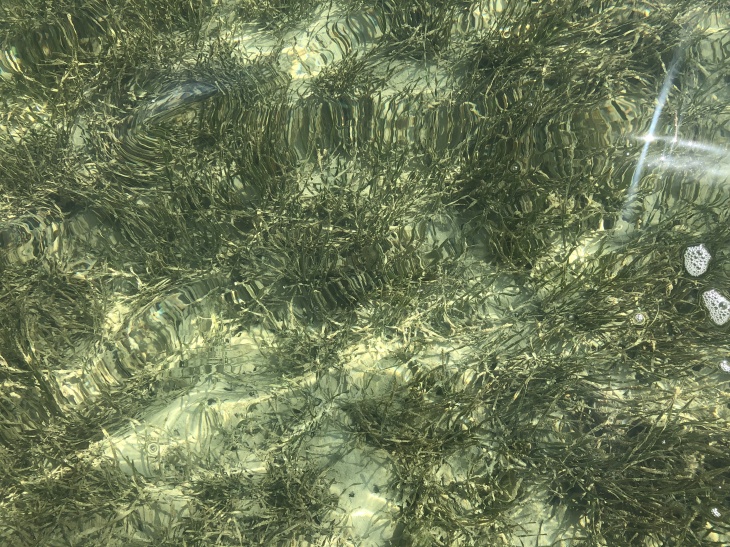Storing CO2, but the right way
A digital twin for projections, an independent body for certification and new legal structures for monitoring. This should help projects for CO2 storage in coastal areas, according to two recent studies with lead authorship or participation of the Helmholtz-Zentrum Hereon. The two papers were recently published in Environmental Research Letters and Elementa. The expertise of the Hereon authors is primarily aimed at politics and business.

Seagrass, pictured here in Florida, could be an option for CO2 storage. Credit: Hereon/Bryce van Dam
So-called “blue carbon ecosystems” for CO2 storage on the coasts and in the ocean can be seagrasses, mangroves or salt marshes, for example. Whether they help to achieve the climate targets and how this can be achieved still needs to be researched in more detail. Projects for CO2 storage are increasingly being initiated by science and industry. But the risks need to be better researched and regulated, say the authors. International legislation is needed for this. Only then could a blue carbon industry be established.
Clear rules for an industry with a future
Regulation through legislation and evaluation are important, says lead author Bryce von Dam from the Hereon Institute of Carbon Cycles. However, this can only be achieved with an international, overarching organization for monitoring, reporting and verification. This organization could issue certificates and create fair conditions. The Paris Climate Agreement is intended to help regulate carbon removal. But until it is fully ratified, there must be other verification bodies. Furthermore, smaller projects should not be disadvantaged - as long as they demonstrably remove greenhouse gases from the atmosphere, say the authors.
“In addition, a digital twin that models baseline scenarios and shows what the carbon cycle would look like without blue carbon activities can help. This works well if it collects real data in real time,” says Bryce von Dam. The twin should create AI-supported “what-if scenarios” regarding the effectiveness of storage methods.
Stronger links between business and science
Hereon Institute Director Helmuth Thomas and other researchers have come to the conclusion that the role of coastal and marine ecosystems can contribute to combating climate change. “But only if we find new international governance and legal frameworks.” This is also important in order to recognize unexpected side effects.
Only with a clear legal definition could science, business and politics jointly create frameworks. One example would be to clarify liability issues. “Some measures in the wrong place can even lead to an increase in CO2 emissions,” says Thomas. The effectiveness of individual projects needs to be much better researched and evaluated. It is also unclear, for example, to what extent international law already obliges states to restore marine habitats. Binding political guidelines are needed.
Original publication
Towards a fair, reliable, and practical verification framework for Blue Carbon-based CDR Can coastal and marine carbon dioxide removal help to close the emissions gap? Scientific, legal, economic, and governance considerations
More information
Institute of Carbon Cycles Institute of Coastal Systems - Analysis and Modeling
Contact
Director of Institute
Institute of Carbon Cycles
Phone: +49 (0) 4152 87-2805
